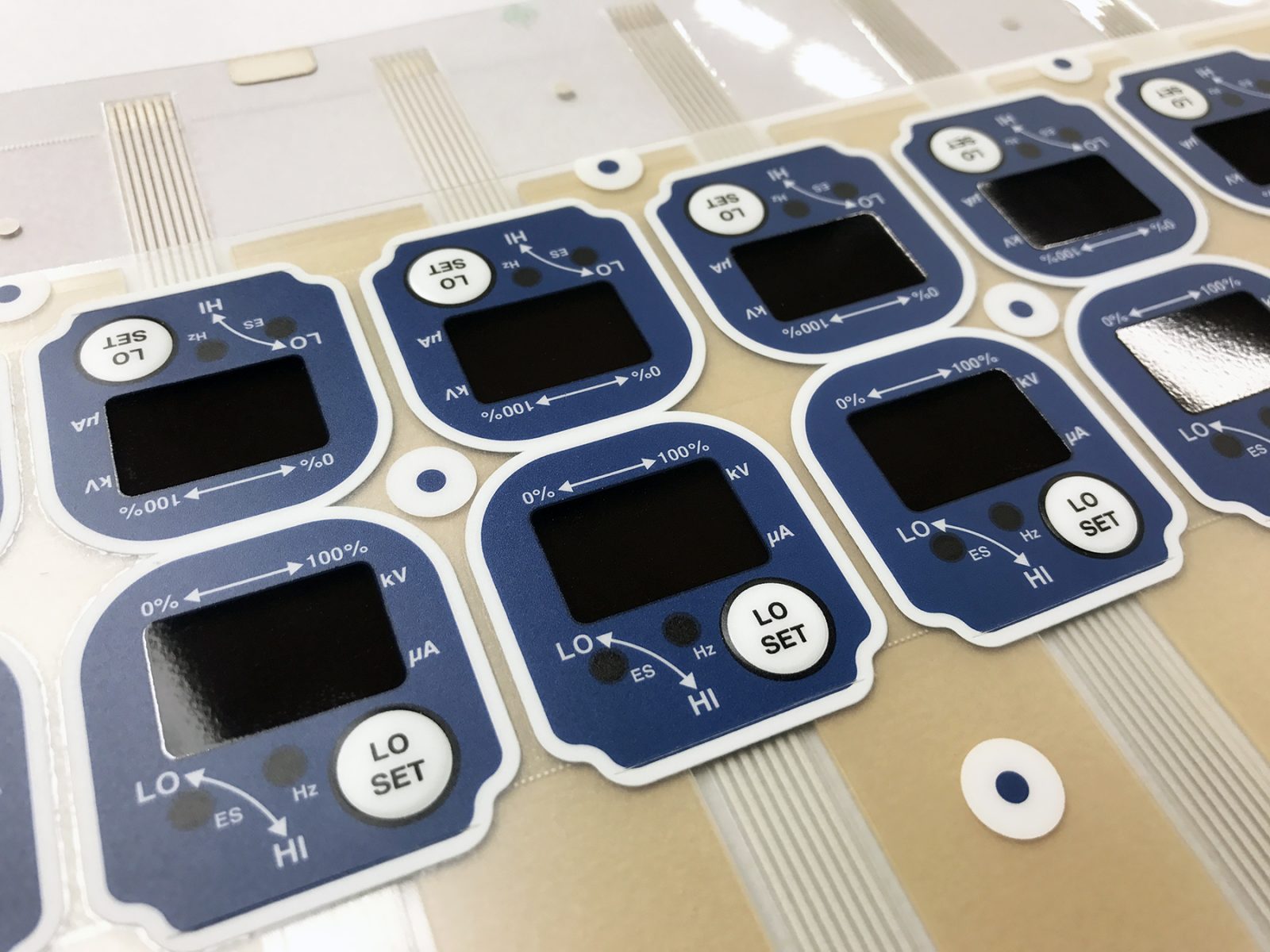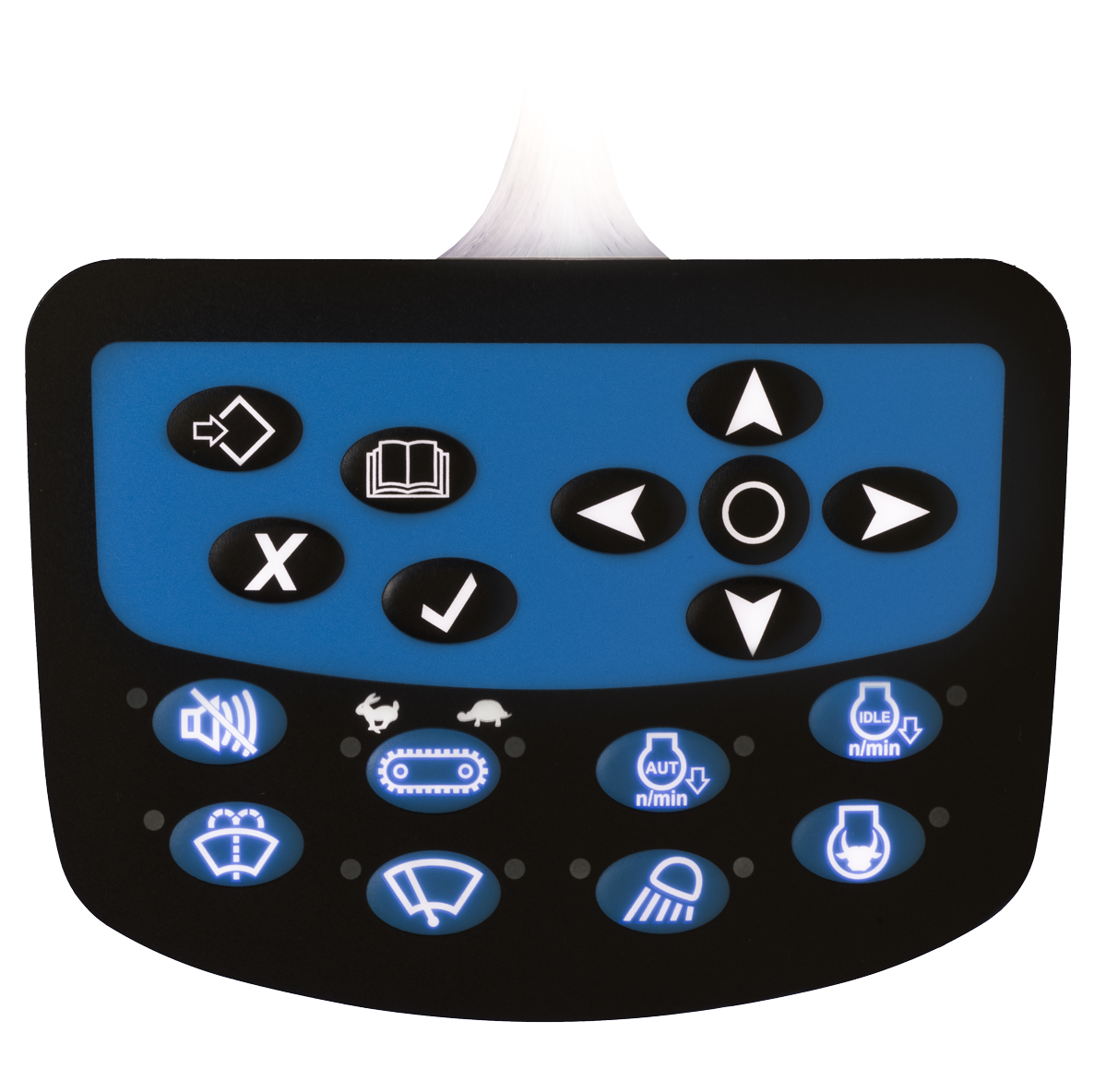The services offered by a professional membrane switch manufacturer go beyond standard production.
The services offered by a professional membrane switch manufacturer go beyond standard production.
Blog Article
All Regarding Membrane Change: Comprehending Its Design and Capability
When you consider the control interfaces in modern-day tools, membrane switches usually come to mind. These parts are much more than simply switches; they mix layout and capability perfectly. Recognizing how they work and what makes them effective can alter your perspective on day-to-day electronics. There are subtleties to their design and performance that you may not be mindful of. Allow's discover what collections membrane layer switches over in addition to various other control systems.
What Are Membrane Layer Switches?

Their smooth nature makes them easy to clean and immune to dust and dampness, an important function in numerous settings. Membrane layer buttons can likewise be personalized regarding form, dimension, and graphics, permitting suppliers to produce distinct user interfaces customized to particular items. And also, they're light-weight and slim, which aids in minimizing the general bulk of gadgets. In general, membrane layer switches play a substantial function in enhancing customer experience throughout a broad array of applications.
Just How Membrane Switches Job
When you press a trick on a membrane layer switch, it activates a simple yet reliable device. The leading layer, often made from adaptable material, lowers onto a conductive layer underneath it. This activity bridges the void in between conductive traces, completing an electrical circuit. As quickly as the circuit closes, it sends out a signal to the tool's controller, which translates your input.
You'll observe that the tactile comments varies based on the button style, supplying either a soft click or an extra obvious response. Once you launch the key, the membrane layer go back to its original position, resuming the circuit and quiting the signal. This process occurs almost instantly, ensuring a receptive individual experience.
Membrane buttons are popular because of their resilience and resistance to dirt and moisture, making them suitable for different applications, from home home appliances to clinical gadgets. Understanding this operation helps you value their widespread usage.
Secret Components of Membrane Layer Buttons
Comprehending the crucial components of membrane buttons is fundamental for realizing their capability and design. At the core, you'll discover the graphic overlay, which offers the visual user interface for customers. Underneath that, there's a spacer layer that separates the circuit layers, making certain that they don't make contact up until pressed. The circuit layer is where the magic happens; it includes conductive traces that finish the circuit when you press the switch. An additional important component is the sticky support, allowing the switch to abide by surfaces firmly. The safety layer guards against environmental variables and use, prolonging the button's life-span. Each part plays a substantial duty in making sure trustworthy efficiency and customer communication. By recognizing these components, you'll get understanding into just how membrane changes run and their value in various applications.
Products Made Use Of in Membrane Layer Change Design
The performance and longevity of membrane layer switches over heavily depend upon the materials made use of in their layout. You usually encounter polyester and polycarbonate as key substrates because of their superb strength and adaptability. These materials stand up to scratches and chemicals, making them perfect for demanding settings.
The conductive layers commonly use silver or carbon, picked for their integrity and conductivity. membrane switch manufacturer. Silver offers exceptional performance, while carbon is a cost-efficient option. For the overlay, you could think about a matte or shiny coating, depending upon your visual requirements and customer experience
Adhesives play a necessary duty too; they bond layers securely and guarantee durability. Make particular to pick adhesives that endure click now environmental aspects like temperature level and moisture. Finally, don't overlook the significance of a good printing technique for graphics, as it improves both functionality and aesthetic allure. Picking the ideal products will certainly guarantee your membrane button stands the test of time.
Style Considerations for Membrane Switches
While developing membrane layer switches, it's essential to consider different factors that affect their functionality and customer experience. Beginning by concentrating on the layout and button size; ensure they're intuitive and easy to browse. Consider the tactile comments you want to offer-- will individuals require a recognizable click or a softer touch? Furthermore, assume regarding the materials you'll make use of, as they'll influence resilience and aesthetic appeals.
Validate your style fits ecological factors, like moisture or temperature level variations, which might impact efficiency. By carefully considering these components, you'll produce a membrane layer switch that enhances usability and satisfaction.
Applications of Membrane Buttons
Membrane switches are versatile components found in numerous applications, from commercial tools to consumer electronics. You'll see their influence in makers that require sturdy interfaces and in tools that profit from sleek styles. Understanding these applications helps you value the functionality and usefulness of membrane buttons in day-to-day innovation.
Industrial Devices Use
When you're looking to boost the performance of industrial equipment, membrane layer buttons provide a reputable service that incorporates durability with straightforward style. These buttons are perfect for severe environments, supplying resistance to dust, dampness, and chemicals. Welcome membrane switches to enhance your procedures and enhance general efficiency.
Consumer Electronics Integration
In the domain name of consumer electronic devices, membrane layer switches play a crucial duty in enhancing individual communication and device capability. Membrane layer buttons additionally ensure longevity and resistance to dust and moisture, expanding the life expectancy of your electronics. By picking membrane layer switches, you boost not just the functionality directory but also the style of your gadgets, making everyday communications smooth and pleasurable.
Advantages and Downsides of Membrane Layer Buttons
While membrane buttons offer a variety of advantages, they additionally come with some drawbacks that you should consider. One considerable advantage is their small design, making them excellent for space-constrained applications.

However, there are negative aspects. Membrane layer buttons can have a much shorter lifespan compared to mechanical switches, especially under heavy use. They can also be less responsive, which could influence individual comments during procedure. If harmed, fixing them can be tough and typically requires complete substitute. Inevitably, their level of sensitivity to severe temperature levels and ecological problems might restrict their efficiency in certain setups. Balancing these advantages and disadvantages will certainly help you determine if membrane layer switches are the appropriate suitable for your job.
Frequently Asked Questions
For How Long Do Membrane Switches Over Usually Last?
Membrane layer switches over generally last in between 5 to ten years, depending on use and environmental problems. You'll want to review aspects like wear, wikipedia reference direct exposure to wetness, and temperature fluctuations to determine their durability successfully.
Can Membrane Layer Switches Be Custom-made for Details Designs?
Yes, you can customize membrane layer buttons to fit certain designs (membrane switch manufacturer). You'll have the liberty to pick shades, forms, and formats that match your job's demands, ensuring they mix seamlessly with your overall aesthetic
What Is the Expense Range for Membrane Layer Switch Production?
The price range for membrane layer button production normally falls in between $1 and $10 per unit, depending on elements like style complexity, amount, and materials. You can obtain quotes from makers to discover the very best option.

Are Membrane Changes Waterproof or Immune?
Membrane switches can be designed to be water-proof or immune, relying on products utilized and building and construction approaches. If you require them for damp settings, assure you define those demands during the style process.
How Do Membrane Switches Compare to Traditional Buttons?
Membrane buttons are typically thinner and more flexible than traditional switches, supplying a smooth style. They're usually much easier to cleanse and integrate, but may not provide the responsive responses you're used to with mechanical choices.
Verdict

Report this page